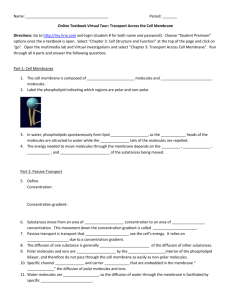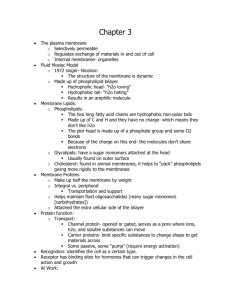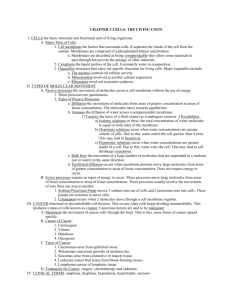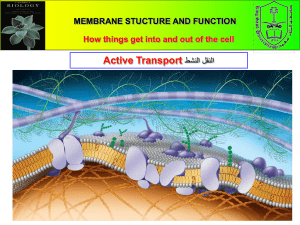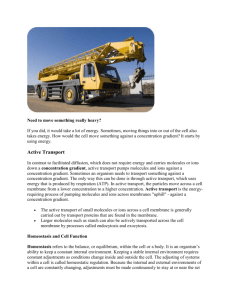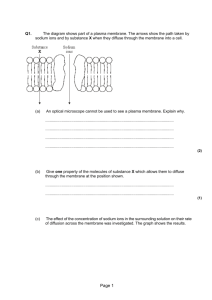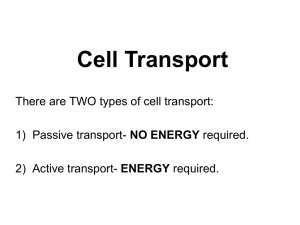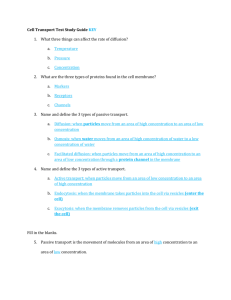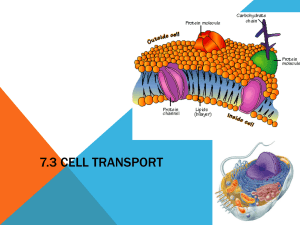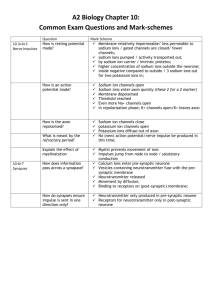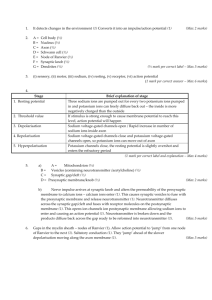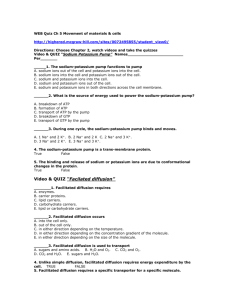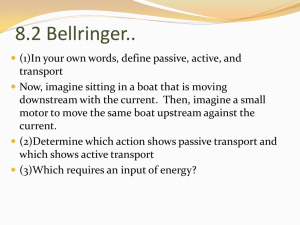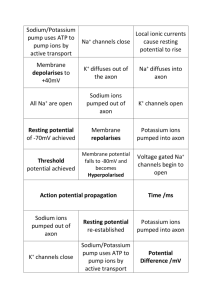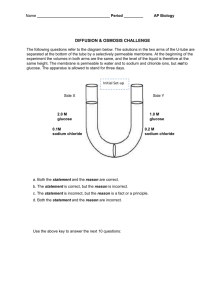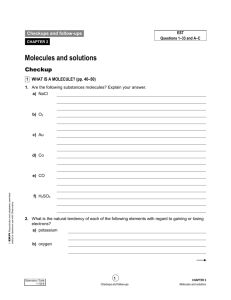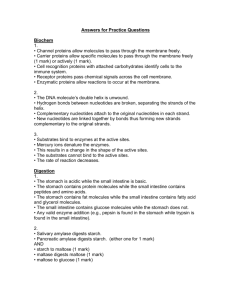exam review 1.4
advertisement
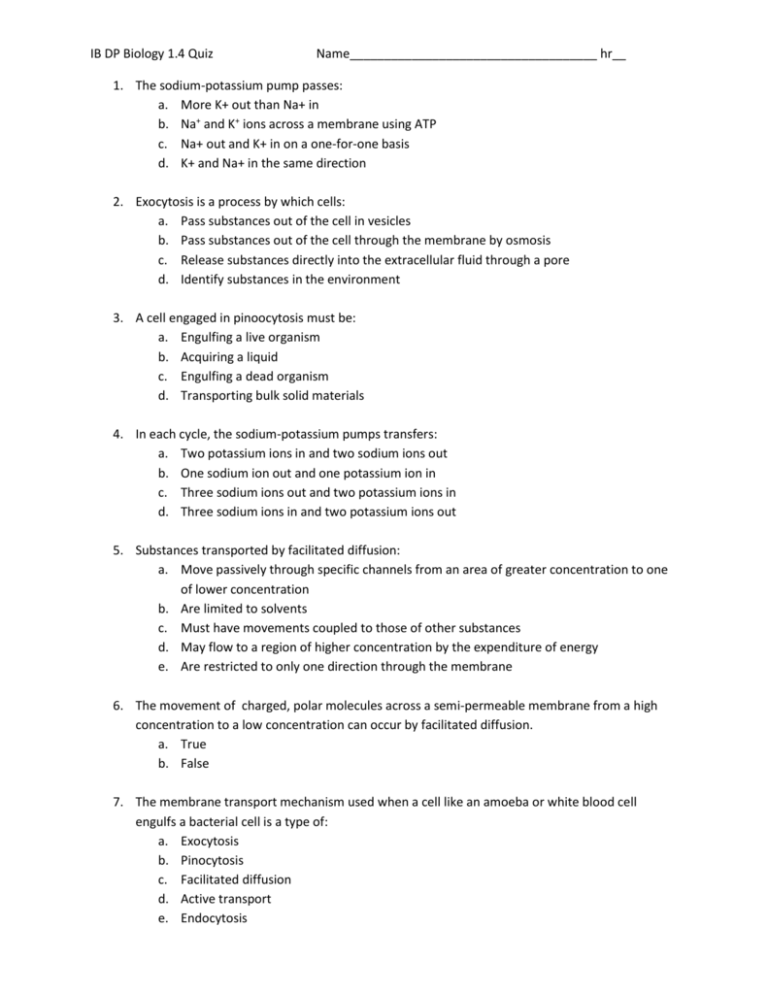
IB DP Biology 1.4 Quiz Name____________________________________ hr__ 1. The sodium-potassium pump passes: a. More K+ out than Na+ in b. Na+ and K+ ions across a membrane using ATP c. Na+ out and K+ in on a one-for-one basis d. K+ and Na+ in the same direction 2. Exocytosis is a process by which cells: a. Pass substances out of the cell in vesicles b. Pass substances out of the cell through the membrane by osmosis c. Release substances directly into the extracellular fluid through a pore d. Identify substances in the environment 3. A cell engaged in pinoocytosis must be: a. Engulfing a live organism b. Acquiring a liquid c. Engulfing a dead organism d. Transporting bulk solid materials 4. In each cycle, the sodium-potassium pumps transfers: a. Two potassium ions in and two sodium ions out b. One sodium ion out and one potassium ion in c. Three sodium ions out and two potassium ions in d. Three sodium ions in and two potassium ions out 5. Substances transported by facilitated diffusion: a. Move passively through specific channels from an area of greater concentration to one of lower concentration b. Are limited to solvents c. Must have movements coupled to those of other substances d. May flow to a region of higher concentration by the expenditure of energy e. Are restricted to only one direction through the membrane 6. The movement of charged, polar molecules across a semi-permeable membrane from a high concentration to a low concentration can occur by facilitated diffusion. a. True b. False 7. The membrane transport mechanism used when a cell like an amoeba or white blood cell engulfs a bacterial cell is a type of: a. Exocytosis b. Pinocytosis c. Facilitated diffusion d. Active transport e. Endocytosis 8. ATP is required in the transport of: a. Water molecules b. All molecules across a membrane c. Molecules to an area of lower concentration d. Molecules to an area of higher concentration e. Molecules through a channel protein 9. Molecules that can cross a cell membrane easily through simple diffusion are: a. Large and polar b. Small and polar c. Small and non-polar d. Large and non-polar 10. This process involves the movement of molecules coming from the Golgi apparatus to other cells. a. Active transport b. Phagocytosis c. Exocytosis d. Pinocytosis 11. Explain active transport (3 marks)

